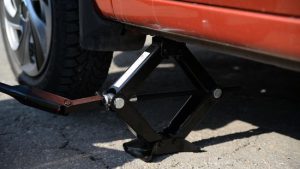Why Your Car Lift Won’t Go Up
Car Lift Won’t Go Up
Getting a car lift to work properly can be difficult. There are many factors to consider when it comes to this type of equipment. Using the correct tools and protective gear can help you avoid damaging your vehicle lift. In addition to regular maintenance, you may need to replace worn out parts, greasing where necessary and performing routine checkups. If you aren’t familiar with the operation of a car lift, you may need a professional to help you.
When you are operating a 10000 lb 2 post car lift, you should never leave the controls. Always adjust the lift arms and supports. This will ensure that the lift is able to raise and lower your car without hitting your car. If you don’t know how to raise and lower your car lift, contact a professional for assistance.

One of the most common causes for a car lift not going up is a hydraulic leak. In order to diagnose the cause of a leak, you should first check the level of hydraulic fluid in the reservoir. If the fluid level is low, you may need to pump the fluid into the cylinder. In addition, you can try to clear any debris from the air valve or lowering valve. In some cases, it may be necessary to replace the cylinder orifice.
Why Your Car Lift Won’t Go Up
Another cause of a car lift not going up is an electrical fault. You may need a qualified electrician to perform repairs. This problem can be caused by blackouts, power surges or other electrical problems. Electrical faults can also cause electrocution and can damage the wiring. You can prevent electrical faults by performing routine maintenance.
Another common cause for a car lift not going up is mechanical damage. This is usually caused by a worn or damaged part. In some cases, you may need a welding kit to fix this issue. The type of damage you need to look for will depend on the type of lift you have. If you aren’t sure what type of repair is necessary, you may need to have the lift inspected by a professional. This can be done in your garage or at a qualified lift inspector’s shop. You can also check the owner’s manual for more details.
You should also check the wiring harness. A visual check should be performed to ensure that there aren’t brakes in the wires. In addition, you should check the limit switches in the parrarrell arms. If the limit switches are not activated, the lift may not go up.
Some lifts are designed to lower slowly. If you aren’t able to lower the lift with your car, you may need to clean or replace the air valve or lowering valve. If the lowering valve is plugged, you can remove it by running the motor for a few seconds. This will release the air from the valve. Then, you will need to repeat this process four times.
If you are unable to lower the lift, you may need to adjust the lift cables. Lift cables are designed to stretch and should be readjusted when the locks stop clicking.